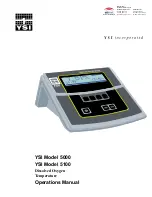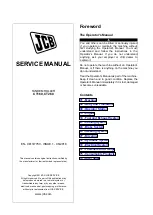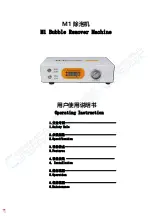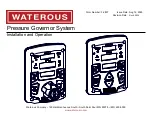
Ensure the connection method indicated in the top left corner of
the MENU screen is correct.
As a reminder the menu screen connection indicator looks like
this.
In this screen the EVCC300 is set to direct connection. If the red
cross is not present the instrument is set for connection to the
charger via a tethered cable or plug in charging cable.
4. Use the softkeys 1 and 3 (Left and right) to select the “PE
contact” test indicated in black.
5. Press softkey 2 to SELECT the test.
6. Firmly press a finger on the PE contact pad.
7. Press and hold the TEST button while keeping a finger on the
contact pad.
During the test the EVCC300 will apply a charging code to the charger to put it into the charging state. This
is to allow the PE contact test to detect if a ground or earth connection is not present. The EVCC300 will then
measure the voltages between L to N, L to PE and N to PE (referring to the plug connections) to ensure the
voltages correct before progressing to the PE touch pad test. The test conditions for the voltage may be found
in the specification section of this manual.
5.2.3 Interpreting test results
The EVCC300 uses input voltage measurements as well as touch pad to detect EV charger’s PE wiring irregularity.
Hence it is essential for users to place fingers on touch pad when instructed on EVCC300’s screen during each PE test
in order to avoid inaccurate test outcome.
When incorrect wiring causes PE to be live such as shown below:
EV charger’s
L -> L
EV charger’s
N -> N
EV charger’s
PE -> L
The EVCC300 will not detect this fault unless the user’s finger is on the pad.
When an EV charger’s Earth is open-circuit such as shown below:
EV charger’s
L -> L
EV charger’s
N -> N
EV charger’s
PE -> Open-circuit ( >600 kΩ)
The EVCC300 will detect this fault
14
Tests
www.calcert.com
1.800.544.2843
0
5
10
15
20
25
30
















































